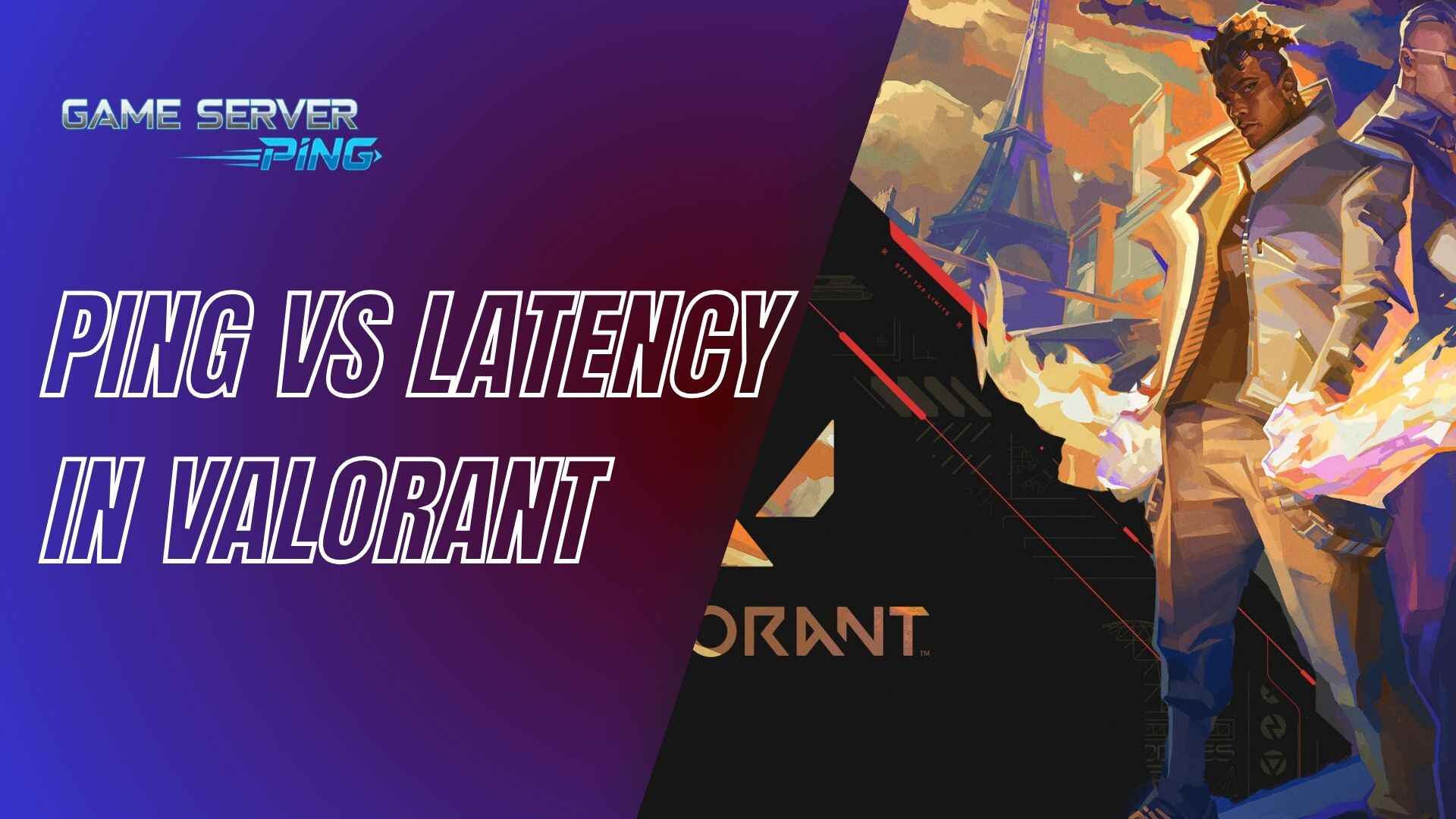Now Reading: Ping vs Latency in Valorant: Ping Test vs Server Test for Better Gameplay
- 01
Ping vs Latency in Valorant: Ping Test vs Server Test for Better Gameplay

Ping vs Latency in Valorant: Ping Test vs Server Test for Better Gameplay
If you’ve ever played Valorant and felt like your bullets should have hit but somehow didn’t register, chances are you’ve run into the nightmare of every gamer—high ping and latency issues. I’ve been there myself, getting tilted mid-match because my shots were a second behind or my character moved like a robot with delay. That’s when I started to dig deep into understanding the difference between ping vs latency, and more importantly, when to use a Valorant server status checker or a ping test to figure out what’s really going wrong.
In this guide, I’ll walk you through everything I learned—what ping and latency mean, how they affect your Valorant gameplay, how to test them, and real fixes that actually work. And if you want to skip the hassle and check your Valorant ping right now, you can try this Valorant Ping Test tool to see live results.
Understanding Ping in Valorant
What Is Ping?
Ping in gaming is simply the time it takes for your PC to send a signal to the game server and get a response back. It’s measured in milliseconds (ms). In Valorant, where every split-second matters, ping can make or break your performance.
- Low ping (0–40 ms): Feels buttery smooth, instant response.
- Medium ping (50–90 ms): Playable, but you’ll notice small delays.
- High ping (100+ ms): Every action feels delayed, gunfights are unfair.
How Ping Is Measured in Valorant
Valorant shows your ping right in the corner of your screen, but if you want more accurate numbers, you’ll need to run a ping test. Tools like the one I linked above let you measure real-time ping to different Riot servers.
Why Ping Matters in Competitive Matches
If you’re like me, nothing tilts you more than dying because your ping spiked at the wrong moment. Low ping means your bullets register faster, your agent’s abilities activate instantly, and you can actually outplay opponents instead of losing to lag.
Understanding Latency in Valorant
Latency Explained in Simple Terms
Latency is the broader term that includes ping, jitter, and even packet loss. While ping is one part of latency, overall latency is the total delay between your input and the server’s response.
Latency vs Ping: Are They the Same?
Nope. Think of ping as the “time to send a signal,” while latency is the overall delay you feel in movement, abilities, and shots. You can have a low ping but still high latency if your network is unstable.
How Latency Affects Gameplay
- Delayed shots: You shoot but bullets hit late.
- Teleporting enemies: They appear and disappear due to latency spikes.
- Input delay: Moving or using abilities feels sluggish.
Ping Test in Valorant
What Is a Ping Test?
A ping test checks how long it takes for data to travel between your device and Riot’s servers. It’s the best way to see if your connection is stable before hopping into ranked.
How to Run a Valorant Ping Test
- Use the in-game stats display (Settings > Video > Stats).
- Or run a Valorant Ping Test here or check the Valorant server status page—for live results across different regions.
Interpreting Ping Test Results
- 0–40 ms: Excellent
- 41–90 ms: Acceptable
- 91–150 ms: Playable but inconsistent
- 150+ ms: Borderline unplayable
Server Test in Valorant
What Is a Valorant Server Test?
A server test checks which Riot server is best for you based on location and routing. Sometimes your ping isn’t high because of your PC—it’s because you’re connected to the wrong region.
Why Server Location Matters
The closer the server, the lower the ping. If you’re in Pakistan but connected to an EU server, expect lag. Always test server connections—or visit our Valorant server status page—to find your nearest option.
Difference Between Ping Test and Server Test
- Ping test: Measures speed of connection.
- Server test: Identifies the best server location.
Factors Affecting Ping & Latency
Internet Speed and Bandwidth
Slow internet = higher latency. Even a good plan can lag if bandwidth is hogged.
Distance to Servers
The farther you are, the higher the ping. That’s why Riot places servers across NA, EU, Asia, and the Middle East.
ISP Routing and Network Congestion
Sometimes the problem isn’t your speed but your ISP’s routing. Bad routing = unstable ping.
Background Apps and Hardware Issues
If you’re downloading updates or streaming, Valorant will lag. Always close unnecessary apps.
Conclusion
The bottom line? Ping and latency are different, but both matter in Valorant. Ping test shows you the speed of your connection, while server test shows you the best server to play on. Together, they can help you avoid lag, improve hit registration, and keep your competitive edge.
If you haven’t already, try the Valorant Ping Test tool and see how your connection stacks up. Trust me, knowing your numbers can save you from those frustrating “I should’ve won that fight!” moments.
What is a good ping for Valorant?
Anything under 40 ms is excellent, under 90 ms is playable.
Why does my ping fluctuate during matches?
Usually due to network congestion, Wi-Fi interference, or ISP routing issues.
Can high FPS reduce latency in Valorant?
Yes, smoother frames reduce input delay but won’t fix bad ping.
Does changing server region reduce ping?
Yes, choosing the nearest server significantly improves ping.
What’s the difference between jitter and latency?
Latency is delay, jitter is inconsistency in that delay.
Can VPNs improve ping in Valorant?
Sometimes yes, if it provides better routing, but not guaranteed.
Does Wi-Fi vs Ethernet affect ping?
Yes, Ethernet is always more stable for gaming.
Are Valorant servers hosted on AWS?
Yes, Riot uses AWS infrastructure across global regions.
















